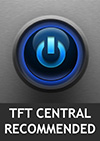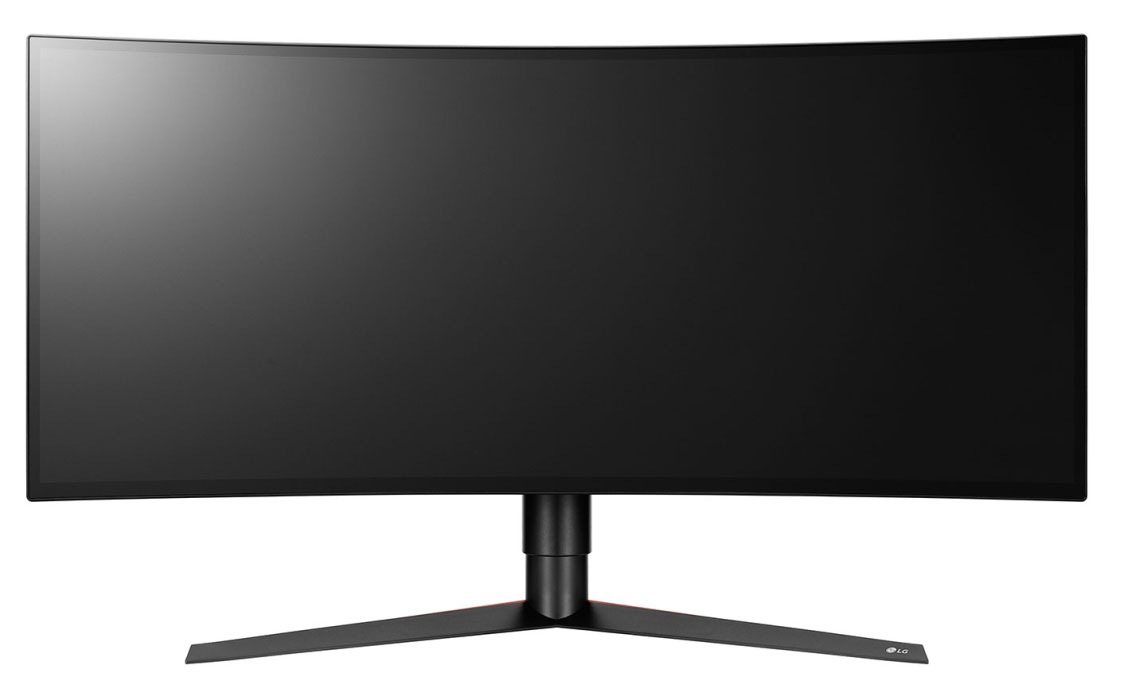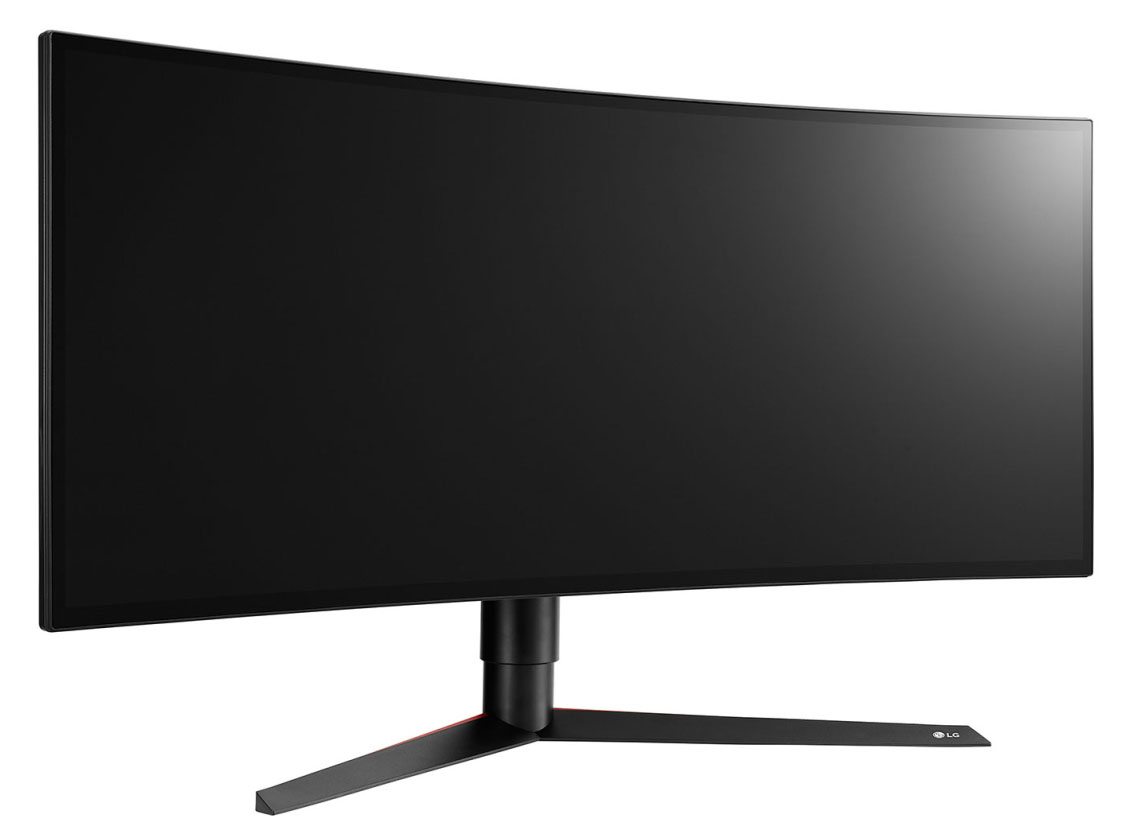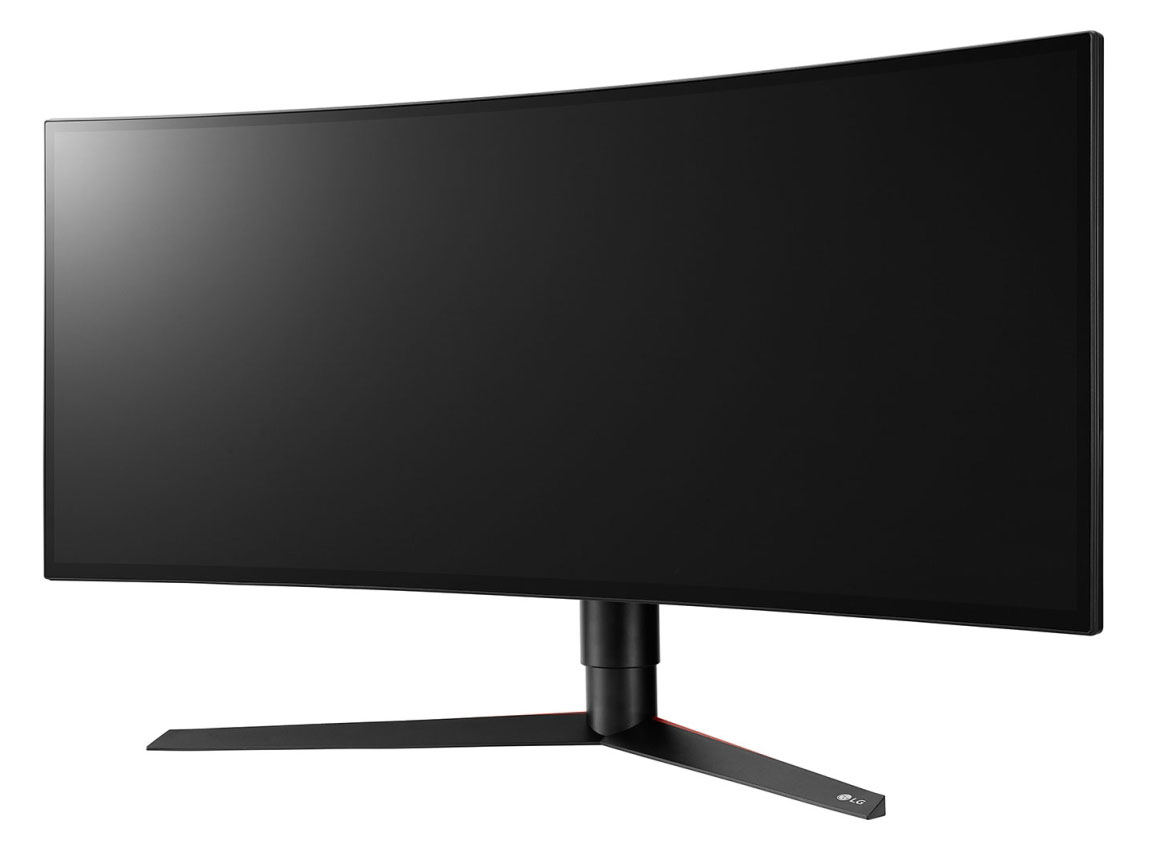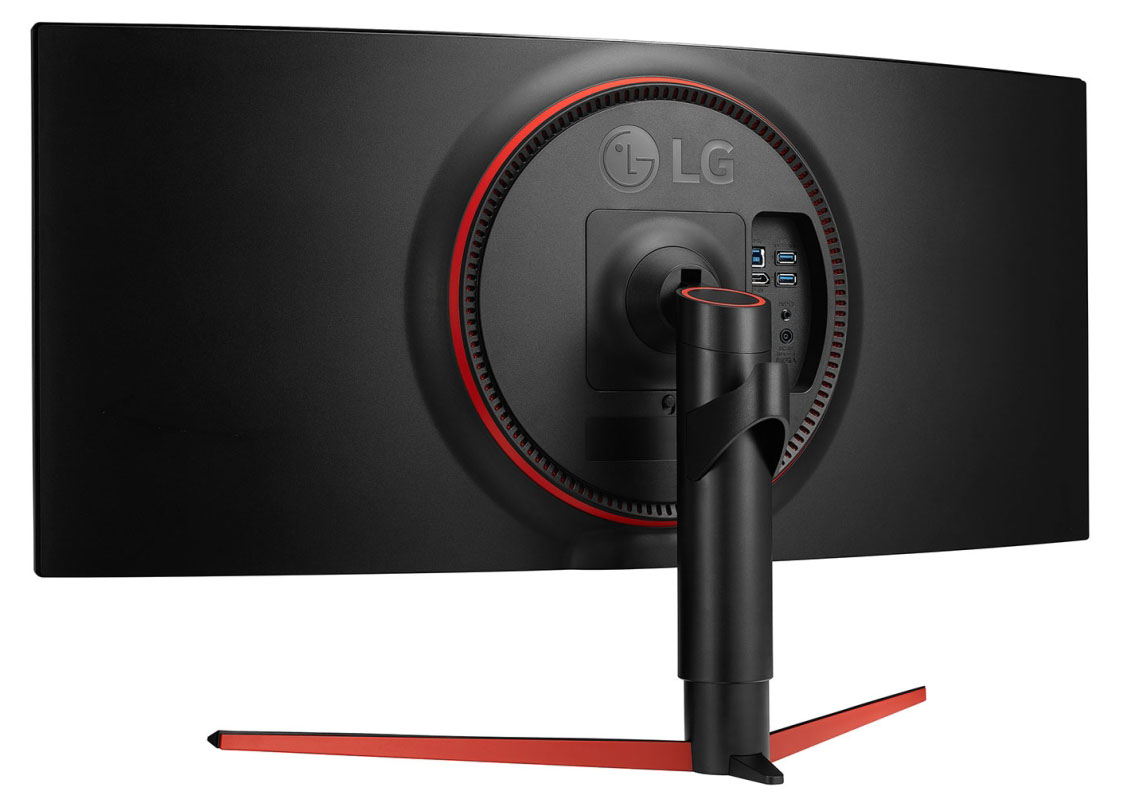LG 34GK950F
First published17 October 2018, last updated 18 Feb 2019

Introduction
LG are continuing to invest in their gaming display line-up through their ‘UltraGear’ range. The latest offering is a 34″ UltraWide format display with a range of high end gaming features. The model in question is the 34GK950, and there are actually two versions of this screen available. The 34GK950F (this review) features AMD FreeSync support, while the 34GK950G features NVIDIA G-sync support. There are a few different features and specs between the two, but fundamentally they are based on the same design, the same underlying panel, and mostly the same specifications. We have both the F and G models with us at the moment for review, so we will start by doing a full review of the F model here, and then move on to the G model. Within that G model review we will make some direct comparisons between the two, once we’ve had chance to fully test both screens. We would recommend not drawing too many conclusions about the G model from this initial review, wait for the full testing to be completed in the near future for proper results.
Anyway, let’s focus on the 34GK950F for now. This screen is 34″ in size with a curved UltraWide format, and 21:9 aspect ratio. This size and format has become increasingly popular for day to day multi-tasking, multimedia and gaming and provides a very interesting alternative to the mass of 16:9 screens on the market. The display uses one of LG.Display’s latest ‘Nano’ IPS technology panels (the LM340UW5 for those interested). This new IPS technology is effectively the latest generation of IPS and most notably features support for a wider colour gamut than traditional LED backlights, extending to cover 98% of the DCI-P3 colour space which is about 35% more than traditional sRGB screens according to the spec. This gives boosted colours for gaming and multimedia to help support the latest titles, HDR content and potentially some wide gamut photo/creation work. The panel offers a 3440 x 1440 resolution and most importantly of all, a 144Hz native refresh rate. This F model is compatible with AMD FreeSync graphics cards for variable refresh rate support, and even has an added Motion Blur Reduction (MBR) backlight system for those who like to use them. There’s a whole load of other gaming extras and things to talk about throughout the course of this review. This is actually the first ultrawide screen to be released with an IPS panel, 3440 x 1440 resolution, FreeSync and a high refresh rate, with previous offerings being limited to 60 – 75Hz maximum. We’ve seen a fair few ultrawide IPS G-sync screens with 100 – 120Hz refresh rates offered, but this will be the first with FreeSync.
Love our work? If you would like to help support our continued work please consider making a donation no matter how small or large. Thank you.
| Check Availability and Pricing – Affiliate Links |
|---|
| Amazon |
| TFTCentral is a participant in the Amazon Services LLC Associates Programme, an affiliate advertising programme designed to provide a means for sites to earn advertising fees by advertising and linking to Amazon.com, Amazon.co.uk, Amazon.de, Amazon.ca and other Amazon stores worldwide. We also participate in a similar scheme for Overclockers.co.uk. |
Specifications and Features
The following table gives detailed information about the specs of the screen as advertised:

The 34GK950F offers a good range of connectivity for a modern screen with 1x DisplayPort 1.4 and 2x HDMI 2.0 offered for video connections, and an additional 2 port USB 3.0 hub, with the ports located on the back of the screen. It should be noted that you will need a very modern graphics card with DisplayPort 1.4 output if you want to be able to run the screen at the full resolution and refresh rate.
If you only have a DisplayPort 1.2 output, you will be limited to 3440 x 1440 @ 120Hz maximum refresh rate. You will need to drop down to 8-bit colour depth as well for 120Hz, and if you’d rather use 10-bit then you would be limited to 100Hz.
The screen has an external power supply and comes packaged with the power cable and brick you need. A headphone output connection is provided as well for audio pass-through.
Below is a summary of the features and connections of the screen:

Design and Ergonomics
The 34GK950F comes in a mostly black design with matte plastics used for the edges, stand and base. This model has a 4-side borderless design with a thin plastic edge measuring only 1.5mm around all sides of the panel. There is a black inner panel border though before the image starts so the total border size is approximately 10mm along the top and sides, and a little thicker at 13mm along the bottom edge. There are no labels or logos on the front of the screen due to the thin bezel design. There is an LG logo on the end of the right leg of the stand only.
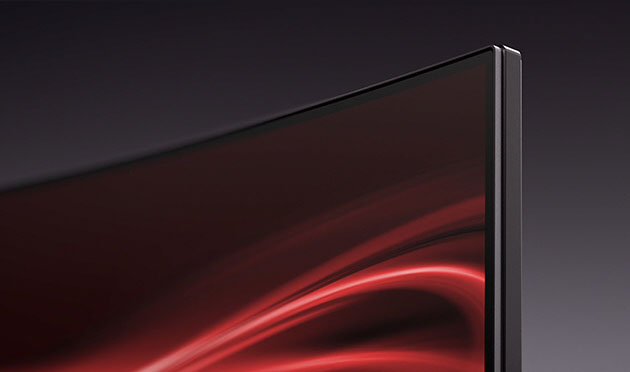
Above: borderless design
Above: rear views of the screen. Click for larger versions
The back of the screen is encased in a matte black plastic as well. There is a red plastic trim ring around the central section where the stand attaches and where the connections are all housed. On the G model this includes a “Sphere Lighting System” which we will look at in more detail during that review. There is no added lighting system here though, but the red trim gives a bit of a highlight to the design from all the black plastics. There is also a bit of red trim on the top of the stand, and on the back of the legs for the stand as you can see from the above pictures quite clearly.

Above: base of the stand
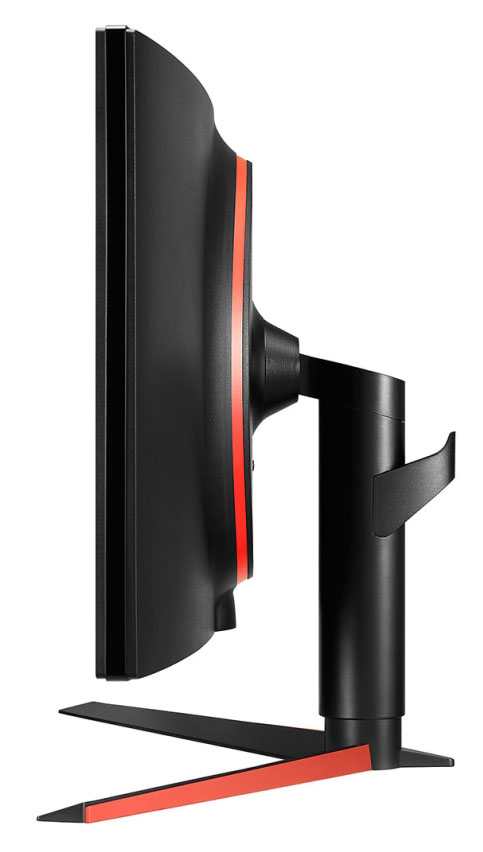
The side profile is fairly think because of the screens curved format, and the stand does protrude quite a long way at the back as well. There is a cable tidy clip provided in the box which attaches to the back if you want.
There is a good range of ergonomic adjustments offered by the stand. Tilt offers a wide range and is smooth to move, if a little stiff to operate in the downwards direction. There is a 110mm height adjustment which is again a little stiff to move downwards but is smooth overall. At the lowest setting the bottom edge of the screen is 100mm from the top of the desk, and 210mm when at maximum height extension. Side to side swivel is provided and is smooth and fairly easy to use. There’s no rotation on this model due to the large size and curved format but there is a little bit of movement in the stand as if it was going to rotate so sometimes it feels a little flimsy as you move the screen around and you might need to ensure it’s aligned flat afterwards.
A summary of the ergonomic adjustments are shown below:

The materials were of a good standard and the build quality felt decent. There was no audible noise from the screen, even when conducting specific tests which can often identify buzzing issues. The whole screen remained fairly cool even during prolonged use as well which was pleasing with a bit of heat given off nearer the top of the screen.
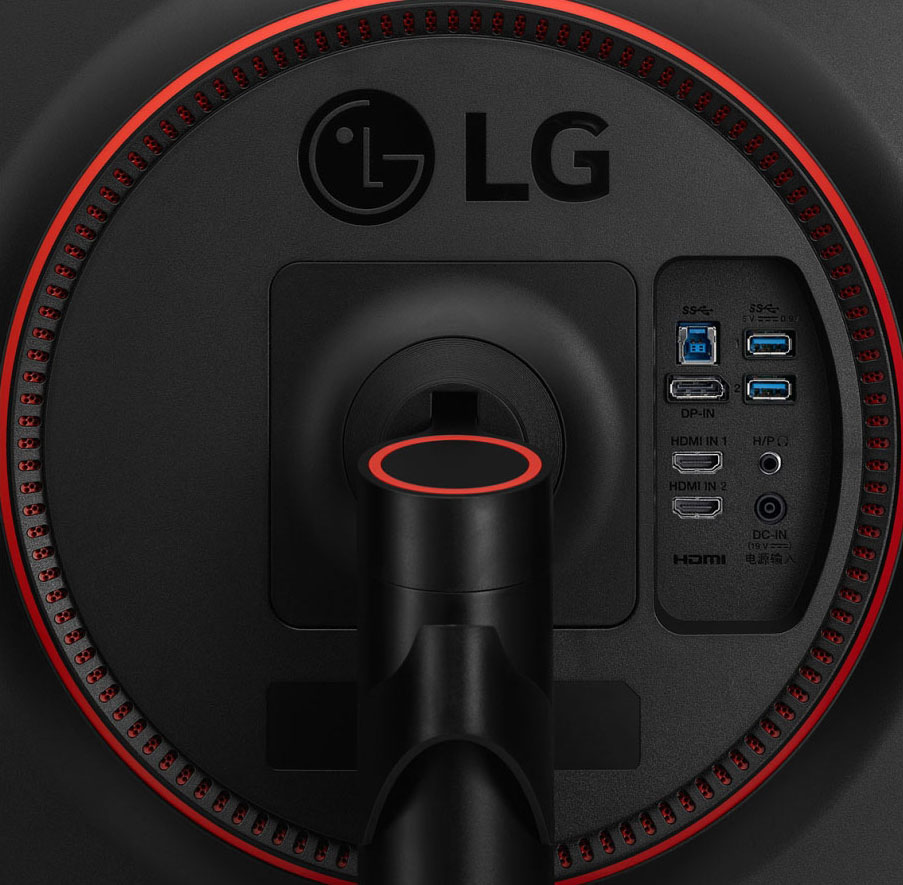
Above: connection options on the back of the screen. Click for larger version
The back of the screen features the connections. There are the DisplayPort 1.4, 2x HDMI 2.0, USB upstream, 2x USB 3.0 downstream, headphone out and the power supply input.

The OSD is controlled through a single joystick controller in the middle of the bottom edge of the screen. There are quick access controls to the volume and brightness using left/right and up/down directions of the joystick. Pressing the button brings up a further quick access menu as shown above.

There are plenty of options available in the menu, and there’s also a handy quick reference at the top which shows you your active refresh rate, FreeSync status, 1ms MBR status, response time setting and HDR status. There are a wide range of preset modes available and plenty of options to customise the image. Navigation was quick, easy and intuitive thanks to the joystick.
Power Consumption
In terms of power consumption the manufacturer lists a typical usage of 95W, maximum of 140W, and <0.5W in standby. We carried out our normal tests to establish its power consumption ourselves.

Out of the box the screen used 86.1W at the default 100% brightness setting. The additional power draw in the spec will be related to having things connected via USB. Once calibrated the screen reached 38.9W consumption, and in standby it used only 0.6W. We have plotted these results below compared with other screens we have tested. The consumption (comparing the calibrated states) is pretty similar to most screens in this size range as you might expect including other ultrawide models like the Dell Alienware AW3418DW, Acer Predator X34 and Asus ROG Swift PG348Q.

Panel and Backlighting

Panel Part and Colour Depth
The LG 34GK950F features an LG.Display LM340UW5-SSA1 Nano IPS technology panel. The ‘Nano’ in Nano IPS is largely a marketing term, used to differentiate this latest generation of IPS technology from older panels. However, there is one significant difference and that is the extended colour gamut that this new panel offers thanks to the KSF LED backlight unit used (see below). The two new LG 34GK950 models are the first ultrawide IPS screens we have seen with a wide gamut, so that immediately differentiates them from the competition.
The panel is capable of producing 1.07 billion colours which is achieved through an 8-bit+FRC colour depth. Some people may complain that the panel is not a native full 10-bit panel, but in reality you are going to be very hard pressed to see any real difference in practice between a good 8-bit+FRC panel and a true 10-bit panel. Even more so when you consider whether you’re going to actually be able to use the 10-bit colour depth in real use.
This screen is aimed at gaming primarily and so if you have a graphics card that can output 10-bit content then you can make use of this capability and the 1.07b colour depth of the display. Both NVIDIA and AMD users should be able to play 10-bit capable PC games from their graphics cards, although consumer grade gaming cards cannot be used for 10-bit content in professional applications. If you have a professional grade graphics card the screen will support 10-bit colour depth for professional applications like Adobe Premiere Pro or Photoshop, as long as you have the necessary end to end 10-bit workflow. This display isn’t really aimed at professional users keep in mind. Key thing is that it will support 10-bit colour depth for gaming where needed.
Screen Coating
The screen coating is a light anti-glare (AG) offering. It isn’t a semi-glossy coating, but it is light as seen on other modern IPS type panels. Thankfully it isn’t a heavily grainy coating like some old IPS panels feature and is also lighter than modern TN Film panel coating. It retains its anti-glare properties to avoid too many unwanted reflections of a full glossy coating, but does not produce too grainy or dirty an image that some thicker AG coatings can.
Backlight Type and Colour Gamut
The screen uses a KSF LED backlight unit where a KSF Phosphor layer (K2SiF6 doped with Mn4 for the chemically minded) is added to the backlight to improve the colour gamut. This allows the screen to offer a wide 98% coverage of the DCI-P3 colour space, which is fast becoming the reference for displays now that HDR is such a big topic and focus. This coverage equates to approximately 135% of the sRGB reference space according to the manufacturers specs, so it is about 35% wider than most traditional screens. If you want to read more about colour spaces and gamut then please have a read of our detailed article.
Backlight Dimming and Flicker
We tested the screen to establish the methods used to control backlight dimming. Our in depth article talks in more details about a previously very common method used for this which is called Pulse Width Modulation (PWM). This in itself gives cause for concern to some users who have experienced eye strain, headaches and other symptoms as a result of the flickering backlight caused by this technology. We use a photosensor + oscilloscope system to measure backlight dimming control with a high level of accuracy and ease. These tests allow us to establish
1) Whether PWM is being used to control the backlight
2) The frequency and other characteristics at which this operates, if it is used
3) Whether a flicker may be introduced or potentially noticeable at certain settings
If PWM is used for backlight dimming, the higher the frequency, the less likely you are to see artefacts and flicker. The duty cycle (the time for which the backlight is on) is also important and the shorter the duty cycle, the more potential there is that you may see flicker. The other factor which can influence flicker is the amplitude of the PWM, measuring the difference in brightness output between the ‘on’ and ‘off’ states. Please remember that not every user would notice a flicker from a backlight using PWM, but it is something to be wary of. It is also a hard thing to quantify as it is very subjective when talking about whether a user may or may not experience the side effects.

At all brightness settings a constant Direct Current (DC) voltage is applied to the backlight, and the screen is free from the obvious off/on switching of any PWM dimming method. As a result, the screen is flicker free as advertised.

Brightness and Contrast
This section tests the full range of luminance (the brightness of the screen) possible from the backlight, while changing the monitors brightness setting in the OSD menu. This allows us to measure the maximum and minimum adjustment ranges, as well as identify the recommended setting to reach a target of 120 cd/m2 for comfortable day to day use in normal lighting conditions. Some users have specific requirements for a very bright display, while others like a much darker display for night time viewing or in low ambient light conditions. At each brightness level we also measure the contrast ratio produced by the screen when comparing a small white sample, vs. a black sample (not unrealistic full screen white vs. full screen black tests). The contrast ratio should remain stable across the adjustment range so we also check that.
Graphics card settings were left at default with no ICC profile or calibration active. Tests were made using an X-rite i1 Display Pro colorimeter. It should be noted that we used the BasICColor calibration software here to record these, and so luminance at default settings may vary a little from the LaCie Blue Eye Pro report you will see in other sections of the review.

First of all we turned the SMART ENERGY SAVING option off in the OSD menu. This was set to ‘low’ by default which caught us off guard a bit. We observed some small brightness fluctuations in normal day to day use as content on the screen changed. We checked dynamic contrast was turned off, and at first thought the screen was faulty. In fact it was this Smart Energy Saving setting being turned on to low out of the box which was causing the observed brightness fluctuations.
At the full brightness setting in the OSD the maximum luminance reached a very high 390 cd/m2 which was only just shy of the specified maximum brightness of 400 cd/m2 from the manufacturer. There was a good 321 cd/m2 adjustment range in total, so at the minimum setting you could reach down to a fairly low luminance of 70 cd/m2. This should be low enough for most people including those wanting to work in darkened room conditions with low ambient light, although not quite as low as some screens can reach. A setting of 15 in the OSD menu should return you a luminance of around 120 cd/m2 at default settings. It should be noted that the brightness regulation is controlled without the need for Pulse Width Modulation for all brightness settings so the screen is flicker free.

We have plotted the luminance trend on the graph above. The screen behaves as it should in this regard, with a reduction in the luminance output of the screen controlled by the reduction in the OSD brightness setting. This is a linear relationship as you can see.

The average contrast ratio of the screen was measured at 981:1 which was good (although not amazing) for an IPS-type panel. This remains stable across the brightness adjustment range as you can see from the graph. Some modern IPS panels from LG.Display have improved contrast ratios and are rated at 1300:1, but this particular panel is rated at 1000:1 only and so the results here are to be expected.
Testing Methodology
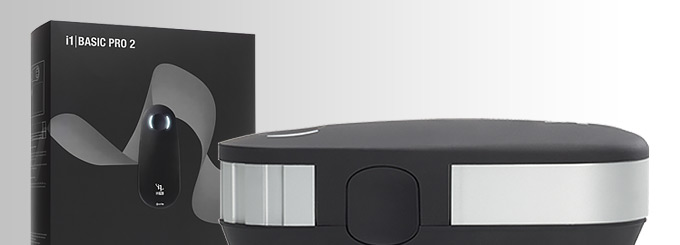
An important thing to consider for most users is how a screen will perform out of the box and with some basic manual adjustments. Since most users won’t have access to hardware colorimeter tools, it is important to understand how the screen is going to perform in terms of colour accuracy for the average user.
We restored our graphics card to default settings and disabled any previously active ICC profiles and gamma corrections. The screen was tested at default factory settings using our new X-rite i1 Pro 2 Spectrophotometer combined with LaCie’s Blue Eye Pro software suite. An X-rite i1 Display Pro colorimeter was also used to verify the black point and contrast ratio since the i1 Pro 2 spectrophotometer is less reliable at the darker end.
Targets for these tests are as follows:
- CIE Diagram – confirms the colour space covered by the monitors backlighting in a 2D view, with the black triangle representing the displays gamut, and other reference colour spaces shown for comparison
- Gamma – we aim for 2.2 which is the default for computer monitors
- Colour temperature / white point – we aim for 6500k which is the temperature of daylight
- Luminance – we aim for 120 cd/m2, which is the recommended luminance for LCD monitors in normal lighting conditions
- Black depth – we aim for as low as possible to maximise shadow detail and to offer us the best contrast ratio
- Contrast ratio – we aim for as high as possible. Any dynamic contrast ratio controls are turned off here if present
- dE average / maximum – we aim for as low as possible. If DeltaE >3, the color displayed is significantly different from the theoretical one, meaning that the difference will be perceptible to the viewer. If DeltaE <2, LaCie considers the calibration a success; there remains a slight difference, but it is barely undetectable. If DeltaE < 1, the color fidelity is excellent.
Default Performance and Setup
This isn’t heavily promoted on LG’s website but the 34GK950F is provided with a factory calibration report in the box. It’s not entirely clear from the report which mode this applies to (my Korean isn’t very good!) but we can still observe the out of the box settings in a couple of the preset modes to see how they perform. We can tell that the factory calibration is designed to deliver a 2.2 gamma, white point within 500k of a 6500k target and dE of <5 (a fairly loose figure to be honest). A copy of the report provided with our sample is included below for reference:

Default settings of the screen were as follows:

Initially out of the box the screen was set with the Game mode (various presets for different uses) set to ‘Gamer 1’, the gamma in mode 2 and the colour temperature set to ‘custom’. The display was set with a very high 100% brightness which was too bright and uncomfortable to use. You will definitely need to turn that down. The colours felt bright and vivid and you could spot the screens wide colour gamut compared with a normal sRGB screen.
We went ahead and measured the default state with the i1 Pro 2. The CIE diagram on the left of the image confirms that the monitors colour gamut (black triangle) extends quite some way beyond the sRGB colour space reference (orange triangle). We measured using ChromaPure software a 131.6% sRGB gamut volume coverage which corresponds to 97.0% of the DCI-P3 reference and 69.6% of the Rec.2020 reference. This is very close to the specified 98% DCI-P3 and 135% sRGB coverage which was good news. For reference we have also provided a comparison of the screens colour gamut compared with the other common Adobe RGB reference space:
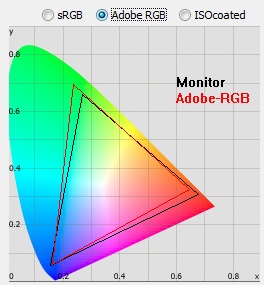
Default gamma was recorded at 2.2 average with a 0% deviance from the target which was great news. The gamma was a little high in darker tones, and a little low in light tones but averaged out at 2.2. White point was measured at a slightly too cool 6804k being a small 5% out from our target. Luminance was recorded at a very bright 406 cd/m2 which is far too high for prolonged general use, you will need to turn that down. The screen was set at a default 100% brightness in the OSD menu but that is easy to change of course to reach a more comfortable setting without impacting any other aspect of the setup. The black depth was 0.41 cd/m2 at this default brightness setting, giving us a good static contrast ratio for an IPS-type panel of 991:1. We have seen some IPS panels reach up to around 1200 – 1400:1 but somewhere around 1000:1 is still decent for this technology, and in this case in line with the panel spec. Colour accuracy measurements here can be ignored as they are comparing the screens wide gamut output with an sRGB reference so will be skewed as a result. We will measure the sRGB preset mode in a moment where they can be considered as part of this factory calibration measurement. Testing the screen with colour gradients showed smooth gradients with only minor gradation evident in the darker tones. There was no sign of any colour banding which was good news.
Color Temp Setting Measurements
| Colour Temp setting | White point measurement |
| Custom | 6804k |
| Warm | 6804k |
| Medium | 7227k |
| Cool | 8791k |
We carried out a test of the various Color Temperature modes as well out of interest and the results are shown above. The custom and warm modes were identical, but did seem to be closest to our 6500k target (5% out). When using the ‘Custom’ mode you can alter the RGB channels in the OSD menu as well which will allow us to calibrate the screen more accurately and correct that white point.
Default sRGB Mode
Since the screen operates with a wide colour gamut in the default Gamer 1 preset mode, we also wanted to test the setup out of the box in the sRGB preset mode. This mode offers an emulation of the smaller sRGB colour space, for those wanting to work with standard gamut content more closely and without the complications of colour management. This might be particularly useful for photo and colour work where content is in a standard sRGB format. Or for those who don’t like the accentuated colours of the native wide gamut for whatever reason.
In the sRGB preset mode the default settings of the screen were as follows:

When switching to the sRGB mode you could immediately spot a change in the colours, as they looked less vivid and colourful. If you are using the full native gamut for a long period of time, you may find the sRGB mode looks and feels dull. In fact it is emulating the smaller colour space deliberately. Most of the OSD settings are actually greyed out in this mode, although thankfully (and unlike some screens we’ve tested), you do still have access to change the brightness control which is good news.
With the ChromaPure software we measured now an sRGB gamut volume of 96.9% which was close to the required colour space although a little under-covered in green shades. Gamma was still very good at 2.2 average, giving only a very small 1% deviance overall. White point was now a little too warm at 6330k but only 3% out from our target which was also pleasing. The default brightness setting was now 40% in the OSD menu, and so the resulting luminance was a much more comfortable 209 cd/m2. Still too bright really, but thankfully you can change this in the menu easily to something more comfortable, and still stay in the sRGB emulation mode. The screen maintained the same good contrast ratio in this mode too, and it was measured at 970:1. The colour accuracy was good as well with an average dE of only 1.2 measured. Again colour gradients showed no banding and were smooth with only minor gradation in darker tones. Overall a good sRGB emulation mode with a decent factory calibration.
Calibration
We used the X-rite i1 Pro 2 Spectrophotometer combined with the LaCie Blue Eye Pro software package to achieve these results and reports. An X-rite i1 Display Pro colorimeter was used to validate the black depth and contrast ratios due to lower end limitations of the i1 Pro device.

We reverted to the ‘Gamer 1’ mode in the menu to utilise the full native colour gamut of the screen. We already had access in the OSD menu to alter the RGB channels so that we could correct the colour temperature (white point). Gamma had been reliable out of the box in the default ‘mode 2’ setting, so we left that as it was. The OSD settings were adjusted as shown in the table above, as guided during the calibration process and measurements. These OSD changes allowed us to obtain an optimal hardware starting point and setup before software level changes would be made at the graphics card level. We left the LaCie software to calibrate to “max” brightness which would just retain the luminance of whatever brightness we’d set the screen to, and would not in any way try and alter the luminance at the graphics card level, which can reduce contrast ratio. These adjustments before profiling the screen would help preserve tonal values and limit banding issues. After this we let the software carry out the LUT adjustments and create an ICC profile.
Average gamma was maintained at 2.2 average (0% deviance) which is what we’d seen out of the box at default settings. It did help correct the gamma curve a bit and bring all tones closer to the 2.2 target. The white point had now been corrected to 6498k which had fixed the small 5% deviance we’d seen before. Luminance had been improved thanks to the adjustment to the brightness control and was now being measured at a far more comfortable 122 cd/m2. This left us a black depth of 0.12 cd/m2 and a slightly improved static contrast ratio of 1000:1 which was good for IPS panel technology and bang on the spec. Colour accuracy of the resulting profile was excellent too, with dE average of 0.2 and maximum of 0.7. LaCie would consider colour fidelity to be excellent. Testing the screen with various colour gradients showed smooth transitions with some minor gradation in darker tones and some slight banding introduced through the correction of the gamma curve. You can use our settings and try our calibrated ICC profile if you wish, which are available in our ICC profile database. Keep in mind that results will vary from one screen to another and from one computer / graphics card to another.
Calibration Performance Comparisons

The comparisons made in this section try to give you a better view of how each screen performs, particularly out of the box which is what is going to matter to most consumers. We have divided the table up by panel technology as well to make it easier to compare similar models. When comparing the default factory settings for each monitor it is important to take into account several measurement areas – gamma, white point and colour accuracy. There’s no point having a low dE colour accuracy figure if the gamma curve is way off for instance. A good factory calibration requires all 3 to be well set up. We have deliberately not included luminance in this comparison since this is normally far too high by default on every screen. However, that is very easily controlled through the brightness setting (on most screens) and should not impact the other areas being measured anyway. It is easy enough to obtain a suitable luminance for your working conditions and individual preferences, but a reliable factory setup in gamma, white point and colour accuracy is important and some (gamma especially) are not as easy to change accurately without a calibration tool.
From these comparisons we can also compare the calibrated colour accuracy, black depth and contrast ratio. After a calibration the gamma, white point and luminance should all be at their desired targets.
Default setup of the screen out of the box was good overall with an accurate average gamma and only a small deviance in the white point. The screen runs by default with its full native colour gamut, which gives a nice boost in vividness for multimedia, HDR content and gaming. If you are looking for more accurate performance while working with standard sRGB content then you might need to switch to the sRGB mode. Thankfully that offers a good emulation of the smaller colour space while retaining the reliable gamma and white point, and also offers a low dE too. Overall a good factory calibration from LG here.


When it comes to black depth and contrast ratio the screen performed well for an IPS-type panel, with a calibrated contrast ratio of 1000:1. We have seen some modern IPS panels start to reach up to 1200 – 1400:1 or so as you can see above, but somewhere around 1000:1 is still respectable for this technology, with some others dipping under that down to the 800 – 900:1 range. You can see that IPS cannot compete with VA technology panels though which typically reach up to 2000:1 – 3000:1. They are generally better than TN Film panels though which are commonly around 850 – 900:1.
| Check Availability and Pricing – Affiliate Links |
|---|
| Amazon |
| TFTCentral is a participant in the Amazon Services LLC Associates Programme, an affiliate advertising programme designed to provide a means for sites to earn advertising fees by advertising and linking to Amazon.com, Amazon.co.uk, Amazon.de, Amazon.ca and other Amazon stores worldwide. We also participate in a similar scheme for Overclockers.co.uk. |
Viewing Angles

Above: Viewing angles shown from front and side, and from above and below. Click for larger image
Viewing angles of the screen were very good as you would expect from an IPS-type panel. Horizontally there was very little colour tone shift until wide angles past about 45°. A slight darkening of the image occurred horizontally from wider angles as you can see above as the contrast shifted slighting. Contrast shifts were slightly more noticeable in the vertical field but overall they were very good. The screen offered the wide viewing angles of IPS technology and was free from the restrictive fields of view of TN Film panels, especially in the vertical plane. It was also free of the off-centre contrast shift you see from VA panels and a lot of the quite obvious gamma and colour tone shift you see from some of the modern VA panel type offerings.
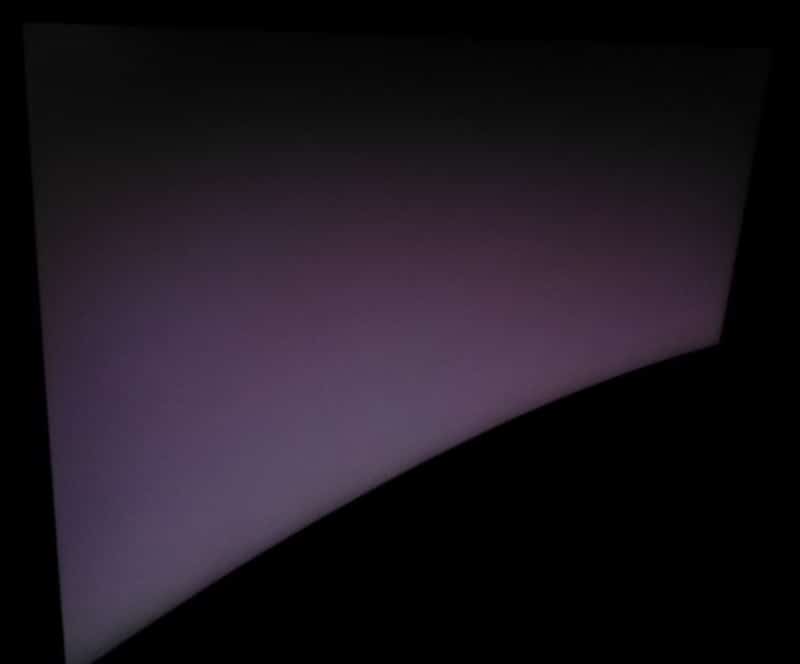

Above: View of an all black screen from the sides. Click for larger versions
Updated 22/10/18: After some further testing we noticed some unusual behaviour when viewing dark content from an angle. It seems that the level of “IPS glow” you will see depends on which side of the screen you are looking from. From the left, and in keeping with our original observations the glow seemed to be a little less than some older generation IPS ultrawide screens. The glow was a little less pale and had a slight purple hue to it. On some of the older 34″ ultrawide IPS screens like the Dell Alienware AW3418DW, Acer Predator X34 and Asus ROG Swift PG348Q the IPS glow was more white and more noticeable than here on the 34GK950F when viewed from that side. However, when viewing the screen from the right hand side the glow was more noticeable, having a more typical pale and white colour to it. Overall this would indicate that the IPS off-angle glow on darker content is probably going to be comparable to other Ultrawide IPS screens.
This type of glow is common on most modern IPS-type panels and can be distracting to some users. If you view dark content from a normal head-on viewing position, you can actually see this glow as your eyes look towards the edges of the screen. Because of the sheer horizontal size of this 34″ panel, the glow towards the edges is more obvious than on small screens, where there isn’t such a long distance from your central position to the edges. Some people may find this problematic if they are working with a lot of dark content or solid colour patterns. In normal day to day uses, office work, movies and games you couldn’t really notice this unless you were viewing darker content. If you move your viewing position back, which is probably likely for movies and games, the effect reduces as you do not have such an extreme angle from your eye position to the screen edges. The glow effect was a little less than on flat ultra-wide screens as the curved nature created a smaller angle between your eyes and the edges of the screen.
Panel Uniformity
We wanted to test here how uniform the brightness was across the screen, as well as identify any leakage from the backlight in dark lighting conditions. Measurements of the luminance were taken at 35 points across the panel on a pure white background. The measurements for luminance were taken using BasICColor’s calibration software package, combined with an X-rite i1 Display Pro colorimeter with a central point on the screen calibrated to 120 cd/m2. The below uniformity diagram shows the difference, as a percentage, between the measurement recorded at each point on the screen, as compared with the central reference point.
It is worth noting that panel uniformity can vary from one screen to another, and can depend on manufacturing lines, screen transport and other local factors. This is only a guide of the uniformity of the sample screen we have for review.
Uniformity of Luminance

Uniformity of the screen was pretty good on this sample overall. The upper corner regions were a little darker than the lower areas of the screen, and in the most extreme examples the luminance dropped down as low as 100 cd/m2 (-20%). Overall though around 70% of the screen was within a 10% deviance of the centrally calibrated point which was good.

We also tested the screen with an all black image and in a darkened room. A camera was used to capture the result. The camera showed there was no major backlight bleed on this sample, only a small amount of light clouding in the four corners captured by the camera. This was slightly more evident on the left hand side in the corners. Remember that this is a photo to give an accurate representation of what you see in person from a couple of metres back, once the screen has been calibrated to a comfortable brightness level.
Note: if you want to test your own screen for backlight bleed and uniformity problems at any point you need to ensure you have suitable testing conditions. Set the monitor to a sensible day to day brightness level, preferably as close to 120 cd/m2 as you can get it (our tests are once the screen is calibrated to this luminance). Don’t just take a photo at the default brightness which is almost always far too high and not a realistic usage condition. You need to take the photo from about 1.5 – 2m back to avoid capturing viewing angle characteristics, especially on IPS-type panels where off-angle glow can come in to play easily. Photos should be taken in a darkened room at a shutter speed which captures what you see reliably and doesn’t over-expose the image. A shutter speed of 1/8 second will probably be suitable for this.
General and Office Applications

One of the key selling points of ultra-wide screens like the this is it’s high resolution and large screen size. The 3440 x 1440 display offers a sharp but comfortable picture. Its pixel area is about 1.8 times larger than an Ultra-Wide Full HD 21:9 monitor, and about 2.4 times larger than a Full HD 16:9 monitor. It provides an efficient environment in using Microsoft Office programs showing 47 columns and 63 rows in excel. Thankfully the high resolution is of a very comfortable size on the 34″ panel, with a 0.2325mm pixel pitch is is very comparable to a 27″ 2560 x 1440 monitor (0.2331mm). This means you are basically getting a wider desktop to work with, with a similar font size to a 27″ model, and maintaining the same vertical resolution as well. If you’re coming from a lower resolution / larger pixel pitch you may still find the fonts look quite small to start with, but like the 27″ 1440p models out there you soon get used to it. Side by side multi-tasking on this screen is excellent and you really do have a nice wide area to work with. We liked the curved format of the display actually for day to day office work. It just felt a bit more comfortable than a flat screen on a model as wide as this, bringing the corners a bit nearer to you. You didn’t really notice the curve in normal use but we liked the feel. Probably down to user taste, so if in doubt try and see one in person.
The light AG coating of the IPS panel doesn’t produce any graininess to the image like some aggressive AG solutions can and so white office backgrounds look clean and clear. The wide viewing angles of the IPS panel technology provide stable images from different angles, meaning you can use the screen if you want for colour critical work, photos etc. It might be orientated at gamers, but it’s IPS panel can deliver strong performance in other areas as well making it a good all-rounder. This panel technology still offers the widest viewing angles and so is well-suited to colour work. Some contrast shifts and IPS-glow may be evident because of the very wide size of the display, as you glance towards the edges from a centrally aligned position. That’s hard to avoid on such a large desktop monitor from close up, even with IPS technology. The default setup of the screen was good as well with a well calibrated gamma curve and white point. By default the screen operates with its wide gamut (around 132% sRGB) colour space which is fine if you’re working with wide gamut content in a colour managed workflow or like the accentuated colour appearance. Some users may wish to switch to the screen’s sRGB mode which provides a reliable sRGB colour space emulation and decent factory calibration as well. That may be more suited if you’re using sRGB content day to day.
The brightness range of the screen was also very good, with the ability to offer a luminance between 390 and 70 cd/m2. This should mean the screen is perfectly useable in a wide variety of ambient light conditions, including darkened rooms. A setting of ~15 in the OSD brightness control should return you a luminance close to 120 cd/m2 out of the box. On another positive note, the brightness regulation is controlled without the need for Pulse-Width Modulation (PWM), and so those who suffer from eye fatigue or headaches associated with flickering backlights need not worry.
There was no audible noise from the screen, even when conducting specific tests which can sometimes cause issues. There is a ‘Reader’ preset mode for office work or reading if you want which by default makes the image a bit warmer than our calibrated state. The SMART Energy setting is quite hidden in the menu but can automatically adjust the brightness of the display in an effort to help save energy. We found it annoying, so you will probably want to turn that off.
The screen offers 2x USB 3.0 ports which can be useful. Both are located on the back of the screen so they aren’t super-easy to access. Might have been nice to have a couple more, and maybe also offer fast charging support like a lot of other modern screens. There are no integrated speakers but there is a headphone output if you want. There are no further extras like ambient light sensors or card readers which can be useful in office environments. Remember, this is aimed at gamers really. There was a good range of ergonomic adjustments available from the stand allowing you to obtain a comfortable position for a wide variety of angles. They were mostly easy to use and it was nice to see side to side swivel included as that sometimes seems to be left off ultrawide screens like this. The VESA mounting support may also be useful to some people as well for more flexibility.
Firmware Updates and OnScreen Control Software (New Feb 2019)
After LG released a new firmware for this screen in early 2019 we wanted to take another look at it. We had confirmation from LG that the update was designed to improve a couple of things. Firstly it extended the supported Variable Refresh Rate (VRR) range from 55 – 144Hz to 48 – 144Hz, which gives a little bit of a boost. Secondly, and potentially more interesting was the news that it was designed to reduce the lag. We will test that out later on in the review in the updated lag section.
Users can carry out their own firmware update easily using LG’s free ‘OnScreen Control’ software, available from LG.com. We installed the current version 3.34 to test it out and complete the firmware update.

The software gives you quick and easy control over a lot of the monitor’s OSD and settings and can run as a small application on Windows/Mac OS. You can see from the example screenshot above there’s control over the preset mode, brightness, contrast etc here. You will notice the section at the bottom for updating the monitors firmware.
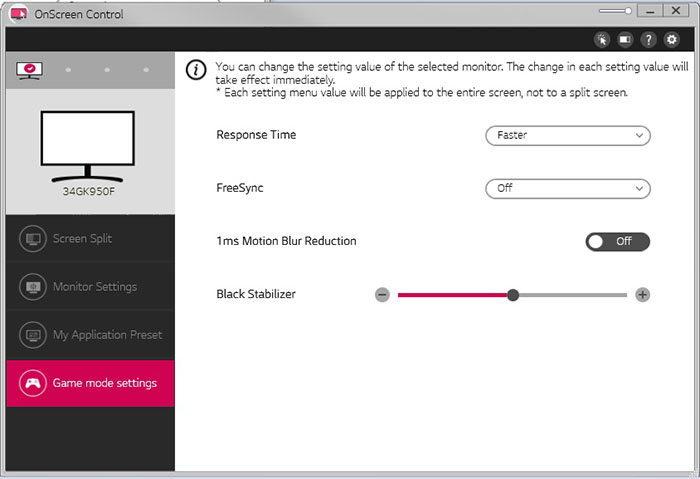
There is also another section to control the gaming settings of the screen quickly and easily.


We ran the monitor firmware update option. This requires you to have the screen connected via USB to your PC in some way, either using a USB Type-C > A connection, or using a more traditional A > B connection. The update itself is all automatic and takes around 10 minutes to complete. After which the screen reboots automatically and resets. We found that it seemed to load up a factory menu page initially and said “no signal”, but a quick change in the OSD controls to re-select the DisplayPort input fixed that fine. The monitor was reset to factory settings so you may need to redo your personalised settings – make a note of any changes you’ve made before you do the firmware update.

There’s no easy way to identify which firmware version you’re on, only to test whether you are on the latest. The OnScreen Control software was a little confusing when it came to identifying things. You can see above that pre-update it seemed to suggest that we were on v 2.00 and could update to v 2.05….

However, after the update it then seemed to suggest we were on v 3.01 and could “update” to v 2.16. After the update, if you try to run another update it just confirms you are on the latest version and no further updates are available anyway. So we were safe in the knowledge we were now on the latest version. On to the actual updated tests then in the following sections.
Responsiveness and Gaming

The 34GK950F is rated by LG as having a 5ms G2G typical response time when in the maximum ‘Faster’ response time mode. The screen uses overdrive / response time compensation (RTC) technology to boost pixel transitions across grey to grey changes as with nearly all modern displays. There is a user control in the OSD menu for the overdrive under the ‘Response Time’ setting with 4 options available as listed above. The part being used is an LG.Display LM340UW5-SSA1 Nano IPS technology panel. Have a read about response time in our specs section if you need additional information about this measurement.
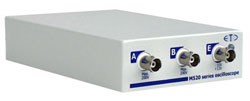 |  |
We use an ETC M526 oscilloscope for these measurements along with a custom photosensor device. Have a read of our response time measurement article for a full explanation of the testing methodology and reported data.
Overdrive Setting



We carried out some initial response time measurements in each of the overdrive settings, along with some visual tests in order to identify what the optimal setting was. We tested the response times at a range of refresh rates but they remained pretty consistent across each setting. The above were measured at the maximum 144Hz refresh rate. We didn’t bother measuring the ‘Off’ mode as we don’t see any reason to run with the overdrive turned off as long as there’s no major overshoot with it turned on at the various settings. With the mode set to ‘Normal’ we measured an overall 11.9ms average G2G response time with some transitions being pretty slow up to around 18ms. There was no overshoot at all, but in practice there was a lot of blurring to moving images if you wanted to run at the high refresh rates.
This was party because of the slow response times, but partly because they were not fast enough to keep up with the frame rate demands. At 144Hz a new frame needs to be drawn every 6.94ms, and so the response times need to be faster than this to keep up and avoid added blurring and smearing.
Switching up to the ‘Fast’ mode brought about some slight improvements with response times now measured at 10.7ms G2G average. Still no overshoot at all, but the blurring in moving content was still pretty high. At the maximum ‘Faster’ mode there was a more significant improvement in response times, now measured at 7.7ms G2G. In practice a lot of the blurring and smearing had been removed, and there was no real overshoot evident either which was good news. We would recommend using the ‘Faster’ response time setting and will do some more thorough testing in a moment.
Detailed Response Time Measurements
Response Time mode = Faster



Having determined that the ‘Faster’ mode delivered the optimal response times, we measured a wider range of grey to grey transitions to give a more complete picture of the performance. Overall the average G2G response time was more accurately measured at 8.2ms. There were quite a lot of faster transitions, such as those changing from black to grey (along the top row, where 0 > x), where in the best case they reached down to 3.8ms. This was better than the 5ms G2G spec even. But at the same time there were also quite a lot of much slower transitions, particularly when changing between two similar grey shades (e.g. 50-100-50 and 100-150-100) where they reached up to as high as 16.5ms. The good news is that there was basically no overshoot at all, apart from when changing from white to light grey where a little bit crept in.
With the response times averaging 8.2ms G2G they are perhaps not quite fast enough overall to accommodate the full 144Hz refresh rate. We experimented with various motion tests and found that 120Hz delivered a slightly sharper image, with slightly less motion blur detectable. At 120Hz the response times need to be <8.33ms G2G average which they are here and so we felt that it delivered a slightly better experience than running at 144Hz. At the maximum 144Hz there was a small amount of additional smearing added, but it was very slight and quite hard to notice. You will probably find that the small amount of extra blurring because of the response times is offset by the 24Hz improvement in frame rate, and the slight improvement in perceived motion clarity that the higher refresh rate brings anyway. We don’t see any problems running this screen at the full 144Hz, or when using FreeSync and reaching the upper end of the range. We would have liked the response times to be a little faster overall but they were still adequate and on par with many other high refresh rate ultrawide screens (see the next section).
Variable Refresh Rate and G-sync Support
(New Feb 2019)
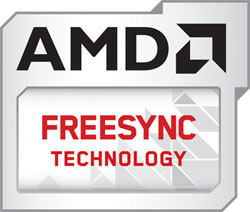
One important feature of this screen is the support for variable refresh rates (VRR). At the time of original release, this was aimed only at AMD graphics card users with FreeSync being supported (actually version 2 which supports HDR, even though that is a fairly lose spec here on the 34GK950F). VRR / AMD FreeSync helps to avoid tearing and stuttering in games without introducing the lag associated with older Vsync options. It’s a very useful technology for when your frame rates fluctuate, especially considering it will take a powerful system to run the screen at its native 3440 x 1440 resolution @ 144Hz. Remember you will need a graphics card with a DisplayPort 1.4 output if you want to be able to reach the maximum 144Hz. If you’ve only got a DP 1.2 card, then the maximum refresh rate you can use is 120Hz (at 8-bit colour depth) or 100Hz (at 10-bit).
When we originally tested the monitor in October 2018 the available supported VRR range was 55 – 144Hz, with LFC supported for lower frame rates below that. There has since been a firmware update released by LG which we took a look at in February 2019 which makes a few improvements. One of which is to extend the VRR range to 48 – 144Hz.
There are two settings available for FreeSync in the OSD menu, standard and extended. The standard range (default) actually only offers you a fairly limited FS range of 120 – 144Hz, and so a lot of users are likely to need to swap to the extended range to offer variable refresh rate support for the lower end. The reason for the limited standard range relates to the “official” support for FreeSync 2, but at least the extended range is also available pretty easily. The extended range offers you support for the full available range.
| A note about possible colour drop in Extended FreeSync Mode and how to fix it Once the extended FreeSync setting is enabled, you may notice a drop in the colour gamut of the display, visible to the naked eye. This seems to be a software bug relating to FreeSync as opposed to anything specific to the display. This is easily resolved, as confirmed with several readers. You should make sure you have the latest AMD graphics card drivers and then you need to go in to the colour settings section of the AMD control panel and change the colour temp setting from “auto” to “6500k”. You may need a reboot for it to take effect. |
G-Sync Support
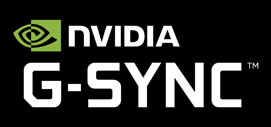
In January 2019 NVIDIA surprised the market by offering support for VRR from their graphics cards on non-G-sync screens. Traditionally if you wanted to use a VRR from an NVIDIA card, you would need a relevant G-sync enabled screen with its own G-sync module added to it (like the 34GK950G version of this screen). Through a driver update in January 2019, NVIDIA GTX 10-series and RTX 20-series users can now benefit from VRR on other non G-sync screens, including the LG 34GK950F. NVIDIA do actually certify some screens as being “G-sync Compatible“, if they meet a range of tests and requirements and are deemed high end performance for VRR. The 34GK950F isn’t one of the current 12 certified monitors, but VRR can work from it nevertheless. Performance may vary though a little and you may spot a few bugs depending on your system, game and settings.
Although this doesn’t seem to be widely published, it seems that you might also need to be on Windows 10 to benefit from G-sync on some (or maybe all) of the FreeSync screens. We couldn’t get it working from our Windows 7 machine, as the option didn’t appear in the NVIDIA control panel at all. We had no issues from our Windows 10 machine though after installing the latest drivers for a GTX 1080Ti card. This may vary perhaps, but that’s certainly what we found from our systems with the 34GK950F.

To get G-sync working you first have to enable the FreeSync option in the monitors OSD, either the basic or extended mode. After that, you will find the “set up G-sync” section in the NVIDIA control panel where you can enable it easily.
It’s impossible for us to test every different scenario or game to determine how well G-sync works sadly, so we would certainly recommend reading around online to determine if your favourite game works well with G-sync on this display (or any other you might be looking to buy). There is a large and very useful resource over at Reddit which tracks results from loads of users which might be helpful. We did try the NVIDIA Pendulum Demo and experienced no issues, bugs or problems when using G-sync. From the reports we’ve seen so far about the 34GK950F it seems to work very well with G-sync, and with the improved VRR range of 48 – 144Hz thanks to the new firmware update too.
Gaming Comparisons


We have provided a comparison of the 34GK950F against many other screens we have reviewed. The overall responsiveness was comparable to most of the other Ultrawide IPS screens we have tested. With an average response time of 8.2ms G2G, it was close to the Acer Predator X34 (7.9ms, an overclocked 100Hz G-sync screen), Acer XR341CK (8.7ms, 75Hz FreeSync) and Asus ROG Swift PG348Q (7.8ms, overclocked 100Hz G-sync) for instance. These response times were achieved without any real overshoot becoming evident, even at the maximum ‘fastest’ response time setting on the LG.
Those Acer and Asus models are based on an older LM340UW2 panel which offered a 60Hz refresh rate, and was overclocked (in the case of the X34 and PG34Q) to 100Hz thanks to the G-sync module. We had seen some improvements more recently from the Dell Alienware AW3418DW which featured a newer LM340UW4 panel with a native 100Hz refresh rate, and this time overclocked to 120Hz thanks to the G-sync module. That panel had produced some faster response times at 6.9ms G2G average. Here on the LG 34GK950F we have the latest generation of LM340UW5 panel with a native 144Hz refresh rate, but it isn’t quite as fast as the Dell when it comes to pixel response times. We may see some difference when we test the G model (with G-sync) shortly, as sometimes the presence of G-sync and FreeSync can have an impact on the overdrive control on these screens.
Anyway, the response times of the 34GK950F were on par with most other ultrawide IPS screens which was pleasing. Remember also that this is currently the only option for an ultrawide IPS screen with 1440p resolution and high refresh rate above 75Hz so it’s quite unique in the market right now. That in itself makes it the fastest in terms of refresh rate and motion clarity, as a result of that higher refresh rate. Not to mention the added MBR mode (discussed below) which can bring about further motion blur reduction benefits when used.
Motion Blur Reduction (MBR)
The 34GK950F features a Motion Blur Reduction (MBR) setting which LG have added to the display. This operates a strobing backlight which can be used for multimedia and gaming to reduce the perceived motion blur significantly in practice. We have written a detailed article about such blur reduction backlights so we would encourage you to read that if you are unfamiliar with how these operate and the benefits they can produce. This setting should only be used for fast gaming and it can help reduce perceived motion blur and improve tracking of moving objects by the human eye. You would not want to use it for static images or general day to day use as the strobing results in the backlight being turned off and on rapidly, and so could lead to issues associated with screen flicker. This will be the first 34″ Ultrawide IPS screen to offer a blur reduction backlight, as they have not been available on previous 100 – 120Hz refresh rate offerings. Interestingly this MBR strobed backlight has only been added to the F model, where the full 144Hz refresh rate is available and supported. The G model does not include any kind of blur reduction strobed backlight. Those who are big fans of MBR may want to consider the F model over the G model, even if they have an NVIDIA graphics card perhaps.

On the 34GK950F the blur reduction backlight option is available only when running at either 120Hz or 144Hz refresh rate, but nothing lower. So you’re not going to be able to use this feature for external games consoles which operate at 60Hz for instance. Like all other strobed backlight systems currently not supported when using variable refresh rate (FreeSync).

MBR backlight cycling, 144Hz (scale = 5ms)
We tested the strobing MBR backlight at both 144Hz and 120Hz settings. Above is the graph at 144Hz which shows that the backlight is cycled on and off every 7ms, basically in sync with the refresh rate (which sends a new frame every 6.944ms). The ‘on’ period lasts 2.25ms, with the ‘off’ period lasting 4.75ms. There is no further control over the strobe length or strobe timing offered on the screen, so it’s just a simple off/on strobing available here.
Oddly at 120Hz the strobing operates in exactly the same frequency which is not ideal. With the strobing quite noticeably out of sync with the refresh rate of 120Hz it leads to noticeable stuttering on moving content. We wouldn’t recommend using the 120Hz mode, but 144Hz operates quite well. You sometimes see some very slight stuttering we found, presumably because of the slight mis-match between refresh rate and strobing rate, but it is very slight. We did not observe any visible flicker from running this MBR mode thanks to its fairly high frequency of operation.
Brightness Range
| Brightness Setting | Luminance (cd/m2) | Black Point (cd/m2) | Contrast Ratio ( x:1) |
| 100 | 234.53 | 0.24 | 977 |
| 75 | 188.95 | 0.19 | 994 |
| 50 | 144.25 | 0.15 | 962 |
| 25 | 94.05 | 0.10 | 940 |
| 0 | 45.78 | 0.05 | 916 |
We also wanted to test the brightness range available when using MBR (at 144Hz in the table above). The table above confirms the range available through that control. You cannot achieve a higher brightness by running the MBR mode at a lower refresh rate as the strobing frequency is still the same (operating at about 142.9Hz).
Unfortunately the brightness setting when MBR is turned on is the same as when MBR is off, so you might have to adjust the brightness control each time you enable or disable the setting. You cannot save the MBR activation by preset either sadly, although you could set up a separate mode for your MBR gaming (with a higher brightness perhaps given the strobing reduces the brightness of the display) and then just switch to that preset mode when you turn MBR on. There’s a good range to use which is beyond some similar strobed backlight screens (see table below).
We did notice that at the higher brightness settings with MBR enabled there was an audible buzzing from the screen. From a normal viewing position you could hear this at 100% brightness, but it had largely disappeared by around 50% and below. This was only when MBR was enabled, there was no buzzing with it turned off at any brightness setting. This is presumably something to do with powering the backlight at high intensity while strobing it on and off. You’re only going to use this for fast gaming and so you wouldn’t notice this buzzing over the sounds of your game we are sure. You may not even want to run the brightness that high anyway, but just one to note if you are wanting to run at the brighter settings and are fussy about noise levels.
Maximum Blur Reduction Brightness – Display Comparison
For ease of reference we have also provided a comparison table below of all the blur reduction enabled displays we’ve tested, showing their maximum luminance before blur reduction is turned on (normal mode) and their maximum luminance with the feature enabled. This will give you an idea of the maximum brightness you can expect from each model when using their blur reduction feature, if that is important to you. A lot of people want a brighter display for gaming and sometimes the relatively low maximum luminance from blur reduction modes is a limitation.
These comparisons are with the refresh rate as high as is available for the blur reduction feature to function. For most this is at 100 – 144Hz. You can achieve a slightly brighter display if you use the feature at compatible lower refresh rates since the strobes are less frequent, but it’s not a significant amount. That can also introduce more visible flicker in some situations.

Note: Pulse Width setting at max where applicable.
*Note 2: The Acer XB270HU was later updated to include a 120Hz mode, which will produce a slightly darker maximum luminance
Blur Reduction Tests with MBR
Of course the main thing we want to test is what improvements the Blur Reduction mode offers when it comes to motion clarity and gaming. We were pleased with the results we’d seen from LightBoost backlights when we tested them, and also from the natively supported blur reduction feature on other displays including the other popular gaming models we’ve tested.

MBR enabled, upper, middle and lower screen areas of the screen showing cross-talk
We used the BlurBusters full-screen TestUFO online motion test to put the feature through its paces. There is a bit of an issue here which was related to strobe cross talk. The strobe cross talk is caused by the timing of the strobe in relation to the refresh rate, and can result in a ghost image behind the moving object. The above results show the clearest image in the upper areas of the screen. Here, the moving UFO object did become sharper and easier to track, and motion clarity was improved quite nicely compared with standard MBR-off motion blur tests. However, as you moved down the screen the cross talk and ghosting became more noticeable. It was moderate in the middle area of the screen which is perhaps the most important given your focus there in gaming and multimedia. At the bottom of the screen it was a bit worse still. You can’t eliminate strobe cross talk completely, but this could have perhaps been tweaked better by LG to provide a more central area of the screen with the minimal ghosting, and cut down on some of the more extreme examples resulting at the bottom area of the screen. We would have also liked to see it useable at 120Hz where for some odd reason it strobes at the same rate as it does at 144Hz, producing unwanted stuttering in practice. The ability to use it at lower refresh rates (even at the risk of visible flickering) may also have been useful to some people.
Additional Gaming Features

- Aspect Ratio Control – the screen has 5 options for hardware level aspect ratio control options as detailed below. It was good to see an option to maintain the original aspect ratio of the source as that might be useful for sources which aren’t in the native 21:9 aspect ratio of the display. It is unclear what the other modes actually do, especially as the manual on the included CD is not actually for this specific screen.

- Preset Modes – There are quite a lot of preset modes available in the ‘Game Mode’ menu. This includes presets for FPS and RTS games, as well as two customisable ‘Gamer 1’ and ‘Gamer 2’ modes. You should be able to set up different modes for different gaming uses. One minor gripe is that the MBR setting cannot be saved to a specific preset mode, it is turned on/off globally each time.

- Black Stabilizer – there is an OSD menu setting which allows you to alter the gamma detail in dark content to make it easier in darker games

- Crosshair – an on-screen crosshair can be enabled via the OSD menu as well which can help accuracy in some games
Lag
We have written an in depth article about input lag and the various measurement techniques which are used to evaluate this aspect of a display. It’s important to first of all understand the different methods available and also what this lag means to you as an end-user.
Input Lag vs. Display Lag vs. Signal Processing
To avoid confusion with different terminology we will refer to this section of our reviews as just “lag” from now on, as there are a few different aspects to consider, and different interpretations of the term “input lag”. We will consider the following points here as much as possible. The overall “display lag” is the first, that being the delay between the image being shown on the TFT display and that being shown on a CRT. This is what many people will know as input lag and originally was the measure made to explain why the image is a little behind when using a CRT. The older stopwatch based methods were the common way to measure this in the past, but through advanced studies have been shown to be quite inaccurate. As a result, more advanced tools like SMTT provide a method to measure that delay between a TFT and CRT while removing the inaccuracies of older stopwatch methods.
In reality that lag / delay is caused by a combination of two things – the signal processing delay caused by the TFT electronics / scaler, and the response time of the pixels themselves. Most “input lag” measurements over the years have always been based on the overall display lag (signal processing + response time) and indeed the SMTT tool is based on this visual difference between a CRT and TFT and so measures the overall display lag. In practice the signal processing is the element which gives the feel of lag to the user, and the response time of course can impact blurring, and overall image quality in moving scenes. As people become more aware of lag as a possible issue, we are of course keen to try and understand the split between the two as much as possible to give a complete picture.
The signal processing element within that is quite hard to identify without extremely high end equipment and very complicated methods. In fact the studies by Thomas Thiemann which really kicked this whole thing off were based on equipment worth >100,000 Euro, requiring extremely high bandwidths and very complicated methods to trigger the correct behaviour and accurately measure the signal processing on its own. Other techniques which are being used since are not conducted by Thomas (he is a freelance writer) or based on this equipment or technique, and may also be subject to other errors or inaccuracies based on our conversations with him since. It’s very hard as a result to produce a technique which will measure just the signal processing on its own unfortunately. Many measurement techniques are also not explained and so it is important to try and get a picture from various sources if possible to make an informed judgement about a display overall.
For our tests we will continue to use the SMTT tool to measure the overall “display lag”. From there we can use our oscilloscope system to measure the response time across a wide range of grey to grey (G2G) transitions as recorded in our response time tests. Since SMTT will not include the full response time within its measurements, after speaking with Thomas further about the situation we will subtract half of the average G2G response time from the total display lag. This should allow us to give a good estimation of how much of the overall lag is attributable to the signal processing element on its own.
Lag Classification
To help in this section we will also introduce a broader classification system for these results to help categorise each screen as one of the following levels. We will now keep these classifications consistent regardless of the actual refresh rate of the screen being measured:
- Class 1) Less than 8.33ms – the equivalent to 1 frame lag of a display at 120Hz refresh rate – should be fine for gamers, even at high levels
- Class 2) A lag of 8.33 – 16.66ms – the equivalent of one to two frames at a 120Hz refresh rate – moderate lag but should be fine for many gamers. Caution advised for serious gaming
- Class 3) A lag of more than 16.66ms – the equivalent of more than 2 frames at a refresh rate of 120Hz – Some noticeable lag in daily usage, not suitable for high end gaming
Updated Lag Graph from v2 Firmware Testing Feb 2019

We have provided a comparison above against other models we have tested to give an indication between screens. The screens tested are split into two measurements which are based on our overall display lag tests (using SMTT) and half the average G2G response time, as measured by the oscilloscope. The response time is split from the overall display lag and shown on the graph as the green bar. From there, the signal processing (red bar) can be provided as a good estimation.
Original v1 Firmware Tests October 2018
We measured a total display lag of 13.8ms. With around 4.10ms of that account for by the pixel response times we can estimate a signal processing lag (the part you would feel) of around 9.70ms. This is a fairly low level of lag overall, although a little over 1 frame at 144Hz. Most G-sync screens show between 0 and 5ms of signal processing lag, as those are helped by the presence of the G-sync module and absence of an additional scaler. We’ve yet to see a G-sync screen that shows any real lag to be honest. FreeSync and other screens with a separate scaler are often quite a bit higher, for instance the LG 38UC99 had 19.4ms of signal processing lag, and the Philips 349X7FJEW had 17.25ms. This LG 34GK950F has 9.7ms which is somewhere in the middle. We don’t expect this to cause any major issues for all but the serious, professional gamer to be honest in real use.
We’ve been asked by several people about the advertised “Dynamic Action Sync” (DAS) mode on this screen which is marketed as helping to reduce lag. There is no specific setting for this in the menu, or any kind of low lag mode as such. It is just enabled by default on the screen.
Updated v2 Firmware Tests February 2019
We were very pleased to see that the new firmware helped reduce all of the lag on this screen. We now had a signal processing lag of only ~0.2ms, so basically nothing. This was excellent news, as we know some people were put off by the previous modest levels of lag on the F model.
Movies and Video
The following summarises the screens performance for videos and movie viewing:
| Category | Display Specs / Measurements | Comments |
| Size | 34″ Ultrawide | Large for desktop display |
| Aspect Ratio | 21:9 | Can support wider screen content than common 16:9 which is useful for movies |
| Resolution | 3440 x 1440 | Can support native 1080p content, but not quite Ultra HD natively which requires a higher vertical resolution of 2160. |
| HDCP | Yes | Suitable for encrypted content across all ports |
| Connectivity | 1x DisplayPort 1.4 1x HDMI 2.0 | Useful additional HDMI input for external Blu-ray players or games consoles. Capable of supporting the high resolution as well |
| Cables | DisplayPort and HDMI | Both provided in the box which is good news |
| Ergonomics | Tilt, height, swivel | Good range of adjustments with most being easy to use. You should be able to position the screen for multiple viewing positions. |
| Coating | Light Anti-glare | Provides clear, non-grainy image and avoids unwanted reflections of full glossy solutions |
| Brightness range | 70 – 390 cd/m2 | Good adjustment range offered. Flicker free backlight operation with no PWM |
| Contrast | 1000:1 after calibration | Strong contrast ratio for an IPS panel, helping provide good clarity in shadow detail and darker content. Cannot compete with VA technology though in this area. |
| Preset modes | n/a | No specific movie or video presets but can easily set up one of the other modes if you wish. |
| Response times | 8.2ms G2G, low overshoot | Good overall and perfectly fine for movie viewing. Stick with the ‘Faster’ response time setting for optimal performance |
| Viewing angles | Very good | Thanks to the IPS panel technology, suitable for viewing from a wide range of positions. IPS glow on dark content could present a problem from some wider angles especially in darker room conditions |
| Backlight bleed | Very good | No backlight bleed on our sample (may vary) which is good, as that can be particularly problematic on movies with black borders. |
| Audio | Headphone out | No integrated speakers, but a headphone out connection if you are passing audio through the screen |
| Aspect Ratio Controls | Several options including options to maintain source aspect | Good options to account for non-native format inputs if needed which is probably useful for the wide range of 16:9 aspect ratio devices out there. |
| PiP / PbP | Not available | n/a |
| HDR support | Not really VESA HDR 400 spec | No “real” HDR support offered here. See our notes below for more info |
HDR support?
We will talk a little about the VESA HDR 400 spec here, which is becoming a bit of a gripe for us to be honest. The spec itself is based on very lose requirements and we have issues with how it is used to promote HDR on displays at the moment, and how it could mislead consumers. That’s probably a topic for another day but you can also review our detailed HDR article for more thoughts and information.
Focusing on the LG 34GK950F now, this model carries this VESA Display HDR 400 specification. In reality, it only partly meets what we would consider the requirements for a proper HDR display. On the positive side, there is of course the wide colour gamut support, with 97% DCI-3 coverage confirmed and measured in our lab. That’s unique to this screen currently in the ultrawide IPS market. There is also an 8-bit + FRC colour depth for support of 10-bit content. So the screen does offer the extended, boosted colours which are a part of what makes up a good HDR experience.
On the other hand the key to HDR, as the name implies, is the improvement to the dynamic range. That is basically the perceived and experienced contrast ratio of the image in practice. To achieve this on an LCD display you need the backlight to be able to support ‘local dimming’, where it is capable of brightening some areas of the screen while simultaneously dimming other parts. This creates that improved dynamic range / contrast ratio. It can be achieved in a few ways with varying numbers of dimming “zones” but the crux of our issue with VESA HDR 400 is that the use of local dimming is not a requirement for the certification. Therefore displays, including the 34GK950F, do not offer any local dimming. They therefore cannot offer any improved dynamic range or contrast beyond the underlying panel static contrast ratio. It makes the whole topic of so-called HDR support a little pointless in our opinion. There is then also the requirement for decent HDR experience for the backlight to be able to display content with higher peak luminance (up to around 1000 cd/m2 is generally considered a good target for an LCD screen). For the VESA HDR 400 spec it only needs to reach 400 cd/m2 which isn’t really much brighter than many “SDR” normal displays. That is the case here with the 34GK950F too.
We did experiment with the screen in HDR mode. If you enable HDR from within your OS, or use an HDR capable external device the screen automatically detects the HDR signal and switches the screen to the HDR mode in the OSD menu. Some options then become greyed out including controls for gamma, colour temp, RGB and the black stabilizer control. You can still manually change the screen brightness, response time, MBR mode etc if you want. We did some tests of varying content and found that really you have to turn the brightness control up to 100% in order for content mastered in 100 cd/m2 to be displayed at around 100 cd/m2. However, for some reason we found the screen peaked at around 230 cd/m2 brightness, even when trying to display content mastered at much higher brightness levels. This was odd, and we’re not sure why it wasn’t capable of reaching up to nearer the 400 cd/m2 spec. It achieved near that in SDR mode in our earlier tests. We also found that it did nothing to improve the dynamic range as there is no local dimming offered at all. In fact we saw the active contrast ratio drop down to around 600:1 when displaying HDR test patterns. We didn’t experiment with this much more as it’s a very lose spec and we don’t see much value in it. The screen has the extended colours and 10-bit colour depth at least, but don’t expect any improved dynamic range of contrast on HDR content on this model due to the lack of local dimming.
34GK950G vs 950F Comparison Revisited

When we originally reviewed these screens in October 2018 we looked at the F model first, and then at the G model. We included this comparison section in our G model review to compare the two screens and try to help readers decide which model might be right for them. Now that we have updated this review with tests from the new firmware in February 2019, some of our views have changed, so we wanted to include this section here as well. We will also update the G model review at the same time so that they match.
There are obviously quite a lot of similarities between the F and the G model, with both having basically the same fundamental design (except the Sphere lighting on the G model) and both being based on the same underlying IPS panel. We have provided a table above summarising some of the key differences in performance and features between the two screens though to help you decide.
Originally when we compared the two models there was a fairly clear target market for each, and a strong reason to buy one of the other. That choice really boiled down to your graphics card choice, with the F model being sensible (and clearly the right option) for AMD FreeSync users, and the G model being preferable for NVIDIA users in our opinion. These variable refresh rate technologies provide some significant benefits in gaming and should not be overlooked. Some NVIDIA users still decided to buy the F model for its other benefits like a higher refresh rate and sRGB emulation mode, and live without the support for VRR in gaming. While also saving themselves a bit of money in the process as the F model was a bit cheaper despite offering more features. With the arrival of the new NVIDIA drivers in January 2019, and the support for VRR on FreeSync screens from compatible NVIDIA graphics cards, it is a bit of a game changer! No longer are you restricted to buying the G model if you want VRR support, as long as you have a high end NVIDIA card you can get the VRR experience from the F model now too. There may be some people who don’t have a high end GTX 10-series or RTX 20-series card, and they would still benefit from the G model we feel, especially as with a less powerful card they are likely to experience lower and more varied frame rates – exactly where G-sync is most useful. However, if you’ve got a high end card, we really don’t think there’s any major reason to buy the G model over the F model now.
The F model has support for a higher refresh rate, being able to handle the full 144Hz of the panel and giving a 24Hz boost over the G model. However, don’t forget you’re going to need a very modern DisplayPort 1.4 graphics card to reach that and so that is an important consideration. The F model also has the added blur reduction (MBR) mode which some people like for their gaming. Having said that though, the G model does have the edge when it comes to response times, but only by a little. The pixel response times are a little faster and also 100% free from any overshoot. Originally the lag of the screens was also a fairly important differentiator for most buyers, with the G version having basically no lag at all thanks to the added G-sync module, and the F model having around 9.7ms of signal processing lag. With the arrival of the v2 firmware in early 2019 for the F model, the lag has been eliminated basically completely and so this is no longer a difference between the two models.
Away from gaming the F model has the advantage. It has a factory calibration that the G model does not, and so provides a more reliable default setup. There is also the useful sRGB emulation mode which might be useful for colour critical work or viewing content in the more common sRGB colour space. On the G model you are restricted to always using the wider gamut of the backlight. Probably fine for gaming and multimedia, but it doesn’t give you the flexibility to run in sRGB if you wanted to. There is also support for 10-bit colour depth if you have an appropriate graphics card and workflow, or want to use it for the latest games. Finally there is a better static contrast ratio with 1000:1 measured, compared with 902:1 on the G model. That may vary from unit to unit, but those were our findings.
The G model does have the added Sphere Lighting system which is pretty attractive, and may be something some people like. It does have the older DP 1.2 connection because of the use of the ver 1 G-sync module and that’s the reason it cannot reach higher than 120Hz here. The HDMI version is also limited to 1.4 because of the G-sync module and so cannot support beyond 50Hz at the full resolution unlike the F model.
The G model is still the right choice in our opinion if you’ve got a lower end NVIDIA card (lower than GTX 10-series and RTX 20-series) and won’t be able to support either DisplayPort 1.4, or VRR on the F model. The G-sync support is going to be particularly useful for gaming on such a high resolution and refresh rate if you’ve got a lower range NVIDIA card. Given the F model can now support VRR from top end NVIDIA cards, and the lag has been eliminated, it is the obvious choice over the G model for those with either a high end NVIDIA card, or an AMD card of course.
Conclusion
Love our work? If you would like to help support our continued work please consider making a donation no matter how small or large. Thank you.
Overall the 34GK950F was a really interesting screen to test, with a range of features which are currently unique to this part of the market. This is the only ultrawide screen currently to support 144Hz refresh rate natively at a full 3440 x 1440 resolution. It’s the only 1440p resolution ultrawide IPS screen with FreeSync and a high refresh rate above 75Hz. And finally it’s the only ultrawide IPS panel with a wide colour space offered. That’s a lot of unique selling points right there!
The screen performs well when it comes to gaming which is of course the intended use. The high refresh rate brings about noticeable improvements in motion clarity compared with 60 – 75Hz screens. Response times are a little slower than some other IPS panels we have tested, but overall are adequate for this screen and on par with most other IPS ultrawide screens available already. Thankfully there is also very low overshoot so you don’t have to live with loads of artefacts to achieve the desired response times. Lag was non-existent after the firmware update in Feb 2019 which was great news, as was the ability to support NVIDIA G-sync for VRR thanks to their driver updates in January 2019. The MBR mode which was added separately was a welcome feature and some users really like the motion blur reduction benefits that those strobing backlights offer. Great to see it included, although we did see a few bugs with it like it’s inability to sync with a 120Hz refresh rate, moderate strobe cross talk and the buzzing of the backlight for the higher brightness levels. The MBR isn’t perfect, but still a welcome addition.
Away from gaming the screen did well in other areas too. It had a good factory calibration and decent contrast ratio for an IPS panel. The support for wide gamut is a nice feature for those who wanted boosted colours, or to work with HDR or wider gamut content. Thankfully the provided sRGB emulation mode works well too, if you want to limit yourself back to a normal gamut mode. We won’t talk about the HDR support any more, we would just ignore that spec and treat it like a normal display.
Overall it’s a really compelling option for ultrawide gaming from AMD systems. You can also read our review of the 950G (G-sync) model which may be more suitable if you’ve got a lower to mid-range NVIDIA system.
| Pros | Cons |
| Only available IPS ultrawide with high refresh rate and AMD FreeSync support (and now G-sync) | Some bugs with MBR operation at 120Hz and buzzing from backlight at higher brightness settings (MBR mode only) |
| Good motion clarity for gaming thanks to good response times, low overshoot, high 144Hz native refresh rate and added MBR mode if you want. Low lag with firmware update in early 2019 | VESA HDR 400 spec a bit meaningless |
| Nano IPS panel brings wide gamut for first time to IPS ultrawide market | Stand a bit wobbly to move |
| Check Availability and Pricing – Affiliate Links |
|---|
| Amazon |
| TFTCentral is a participant in the Amazon Services LLC Associates Programme, an affiliate advertising programme designed to provide a means for sites to earn advertising fees by advertising and linking to Amazon.com, Amazon.co.uk, Amazon.de, Amazon.ca and other Amazon stores worldwide. We also participate in a similar scheme for Overclockers.co.uk. |
